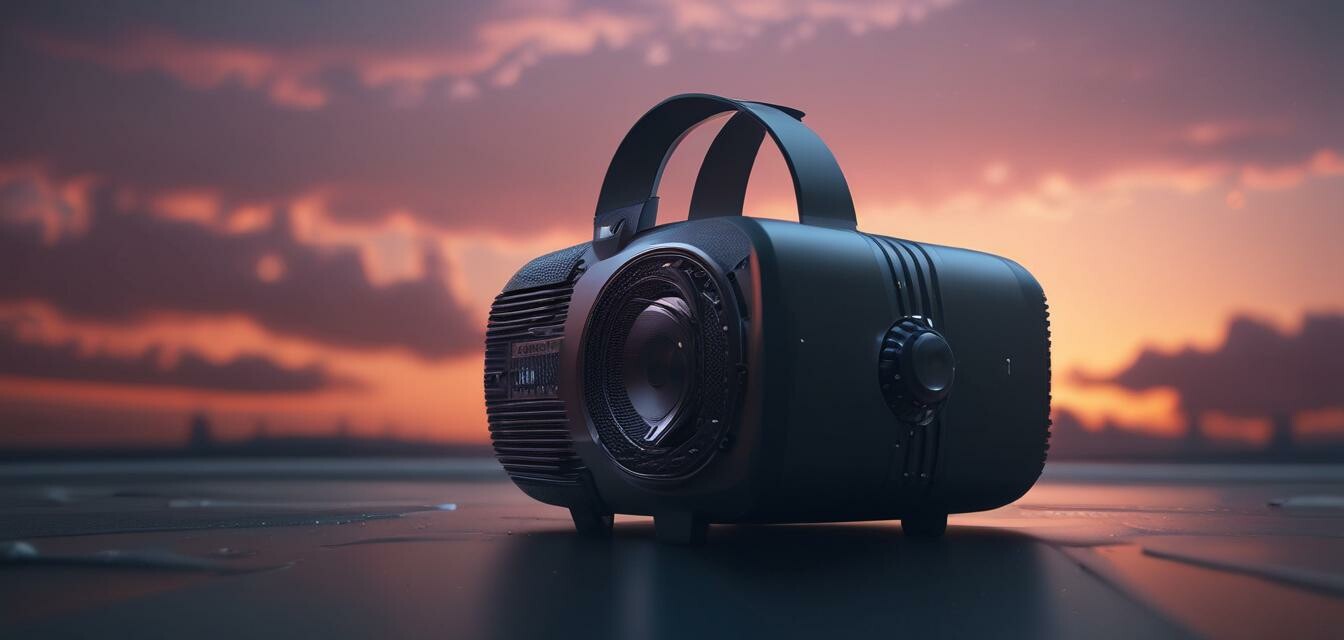
The Impact of VR on Audio Technology
Key Takeaways
- Virtual reality is changing how we experience audio, creating more immersive environments.
- Advancements in audio technology are enhancing the realism of virtual experiences.
- The future of audio technologies is strongly tied to the capabilities of VR.
- Audio spatialization techniques are becoming crucial in various industries, including gaming and training.
In recent years, virtual reality (VR) has emerged as a revolutionary technology impacting various fields, particularly in audio technology. By merging the real and virtual worlds, VR is not only changing our interaction with visual content but is also reshaping how we experience sound. In this article, we will explore the transformative effects of VR on audio technology, current trends, and future implications.
How VR is Transforming Audio Technology
Virtual reality creates a simulated environment that can connect users both visually and audibly. Depending on the design of the audio system integrated into VR, users can experience sound in ways that are either similar to or entirely different from traditional audio experiences. Here are some of the notable ways VR is impacting audio technology:
- Immersive Soundscapes: VR allows for the creation of 3D sound environments where users can feel sounds coming from specific directions, enhancing overall immersion.
- Real-Time Feedback: VR systems can provide audio feedback that responds to user movements, making experiences more interactive.
- Spatial Audio Techniques: Techniques such as binaural audio enhance the sense of space and reality in VR settings.
The Role of Spatial Audio in VR
Spatial audio is at the forefront of revolutionizing audio technology in virtual environments. This technology differs from traditional stereo sound in that it captures a 360-degree soundfield, allowing users to locate sounds in a three-dimensional space.
| Traditional Audio | Spatial Audio |
|---|---|
| Limited to two dimensions | Encompasses three-dimensional soundscapes |
| Static sound placement | Dynamic sound movement with user interaction |
| Basic stereo effects | Complex audio positioning for realism |
Current Trends in Audio Technology for VR
The integration of audio in virtual reality experiences is evolving rapidly, and some key trends are emerging:
- Increased Hardware Compatibility: As VR headsets become more prevalent, audio technology is adapting to ensure compatibility, including advanced audio interfaces and headsets.
- Advancements in Software: New software tools are enabling developers to create rich audio environments with greater ease.
- Focus on User Experience: Developers are prioritizing user experience by refining sound design to maximize impact and immersion.
- Integration with Other Technologies: The fusion of AI and machine learning with VR audio systems is leading to smarter audio environments that can change based on user preferences and behavior.
Challenges Facing Audio Technology in VR
Despite the advantages of integrating audio with virtual reality, there are challenges that developers and users must navigate:
- High-quality audio equipment may be expensive and less accessible to the general consumer.
- Creating realistic audio experiences requires significant investment in development time and resources.
- Not all users have the same level of sensitivity to sound details, which can affect their experience.
Future Implications of VR on Audio Technology
As virtual reality advances, the implications for audio technology are profound:
- Enhanced Interactive Learning: VR could revolutionize educational environments, creating immersive experiences that foster better learning.
- Increased Demand for Specialized Content: There will likely be a rise in demand for VR audio content, including games, training programs, and simulations.
- New Career Opportunities: The expansion of VR technology may lead to new career paths in sound design, engineering, and development specifically tailored for immersive experiences.
The Impact on Other Industries
VR is not confined to entertainment; its influence in various sectors demonstrates the versatility of immersive audio technology:
- Healthcare: Simulation-based training for medical professionals with high-fidelity audio cues.
- Real Estate: Virtual property tours enhanced with spatial audio to provide realistic ambiance.
- Gaming: Enhanced storytelling through both visual and auditory elements leads to deeper engagement.
Tips for Embracing Audio Innovations in VR
- Stay informed on emerging audio technologies and how they integrate with VR systems.
- Invest in quality audio gear tailored for VR to enhance your experience.
- Participate in discussions and forums about audio trends in gaming and virtual reality to exchange ideas and experiences.
Pros
- Enhances immersion and realism in virtual experiences.
- Creates new entertainment and educational opportunities.
- Enables dynamic audio experiences tailored to user actions.
Cons
- High-quality audio technology can be expensive.
- Requires significant development resources.
- Varied user experience based on individual audio sensitivity.
Conclusion
The impact of virtual reality on audio technology is undeniable. As developers continue to innovate and refine their approaches to sound in virtual environments, users can expect increasingly immersive experiences. Keeping abreast of these advancements not only enhances understanding but also prepares consumers for what is on the cutting edge of audio technology.
For those keen to explore more about how technology is evolving in the speaker market, check out our News and Trends category.